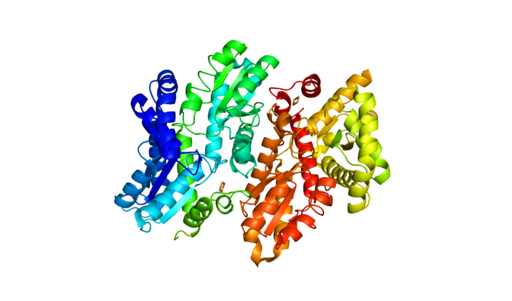
Understanding how disease states arise from genetic variants is important for understanding disease resistance and progression. What can complicate our understanding of disease development is when two people have the same genetic variant, but only one has the disease. To investigate what might be happening with ferrochelatase (FECH) variant alleles that result in erythropoietic protoporphyria (EPP), scientists used next-generation sequencing (NGS) along with RNA analysis and DNA methylation testing to assess the FECH locus in 72 individuals from 24 unrelated families with EPP.
What is FECH and its relationship to EPP?
FECH is the gene for ferrochelatase, the last enzyme in the pathway that synthesizes heme. The inherited metabolic disorder, EPP, is caused when the activity of FECH is reduced to less than a third of normal levels thus, increasing the levels of protoporphyrin (PPIX) without metal in erythrocytes. The consequences of the low-metal PPIX include severe phototoxic skin reactions and hepatic injury due to PPIX accumulation in the liver.
How does FECH expression affect EPP?
The EPP disease state is not simply the lack of two functional FECH genes. Disease occurs with a hypomorphic allele, mutations in FECH that reduce its function, in trans to a null FECH allele. Researchers focused on three common variants called the GTC haplotype that are associated with expression quantitative trait loci (eQTL) that reduce FECH activity. Interestingly, these three variants have been found in trans, but researchers wanted to learn if there were individuals who were homozygous for the GTC allele and how EPP manifested for them.
What did researchers discover?
The NGS analysis identified five individuals who were homozygous for the GTC allele but four them had varying degrees of EPP while one was asymptomatic. By resequencing the FECH gene in these 24 EPP families, Chiara et al. also discovered a novel intronic variant and a low-frequency intronic variant only associated with the four GTC homozygous individuals who developed EPP. To study how the novel variant affected FECH expression, RT-PCR analysis showed altered mRNA splicing that introduced a stop codon from a pseudo-exon. In addition, these variants were found in cis with one of the two hypomorphic alleles.
Examining the inheritance of 446 variants of FECH hypomorphic alleles showed that these variants were part of the same 20kb haplotype including the GTC allele. This was true among unrelated individuals as well the five homozygous for the hypomorphic allele.
Because DNA methylation of introns is known to regulate splicing, researchers investigated the CpG sites in FECH. In fact, the novel intronic variant added a methylated CpG site while two other variants removed two commonly methylated CpG sites. RT-PCR analyzed the one-point variant (the T in GTC allele) that the removed CpG site and found a splicing isoform that skipped an exon and inserted part of an intron.
What is the significance of these results?
Chiara et al. discovered a novel FECH variant that had a role in decreasing enzyme activity and thus, a role in developing EPP. By investigating individuals who were homozygous for hypomorphic FECH alleles, they found how different mechanisms in cis could influence the development of EPP. Because they showed how variants could influence EPP, the results suggested that the small differences in the FECH gene, in addition to known alleles or variants, may influence who develops the disease and how severe that disease outcome may be.
The results surprised me because I never expected that variants so far away from coding regions could have a pathogenic role in modulating splicing throughout a intragenic [methylation]-dependent mechanism.
—Dr. Elena Di Pierro
What tools were used and how could they help your NGS workflow?
We use automatic extraction with Maxwell of Promega for diagnostic routines, the fact that we can use the same DNA sample also for NGS applications allows us to save time and also obtain less variable data.
Furthermore, the use of fluorimetric quantification kits on Glomax is quick and reliable. — Dr. Elena Di Pierro
Genomic DNA was isolated from peripheral blood samples using the Maxwell® Instrument and quantitated using the fluorescent dye-based QuantiFluor® ONE dsDNA System on the GloMax Discover® System. The purified DNA was then used to construct NGS libraries to sequence the FECH gene.
Total RNA was extracted from peripheral blood samples with the Maxwell® Instrument using the Maxwell® 16 LEV simplyRNA Blood Kit, and 400ng of the purified RNA used for RT-PCR analysis.
For DNA methylation analysis, bisulfite-treated DNA was amplified using GoTaq® Hot Start Green Master Mix with biotin-labeled primers, and subsequently purified by Sepharose beads before pyrosequencing.
Reference
Chiara, M. et al. (2020) Targeted resequencing of FECH locus reveals that a novel deep intronic pathogenic variant and eQTLs may cause erythropoietic protoporphyria (EPP) through a methylation-dependent mechanism. Genet. Me. 22, 35–43. doi:10.1038/s41436-019-0584-0
Related Posts
Sara Klink
Latest posts by Sara Klink (see all)
- A One-Two Punch to Knock Out HIV - September 28, 2021
- Toxicity Studies in Organoid Models: Developing an Alternative to Animal Testing - June 10, 2021
- Herd Immunity: What the Flock Are You Talking About? - May 10, 2021
